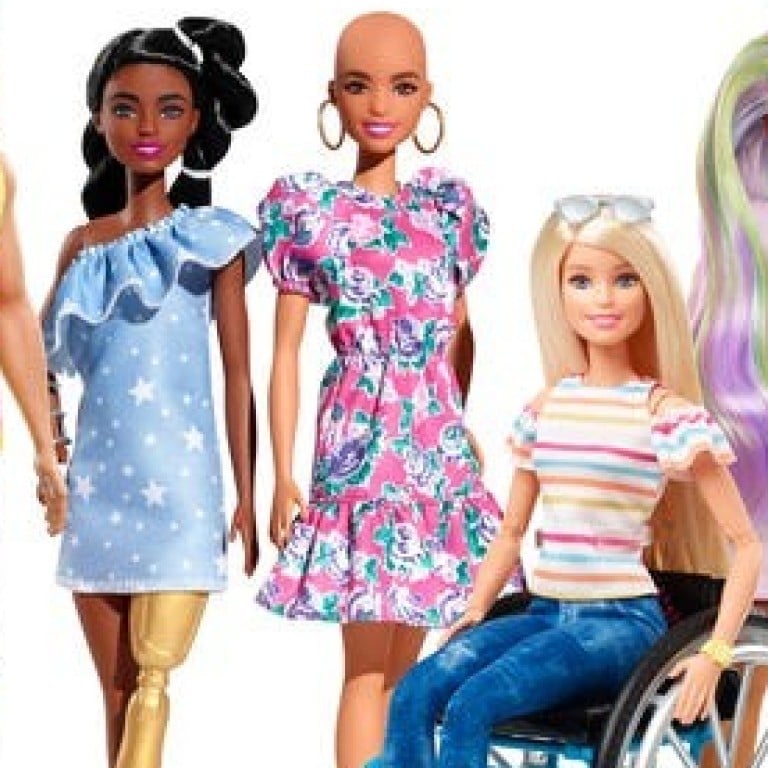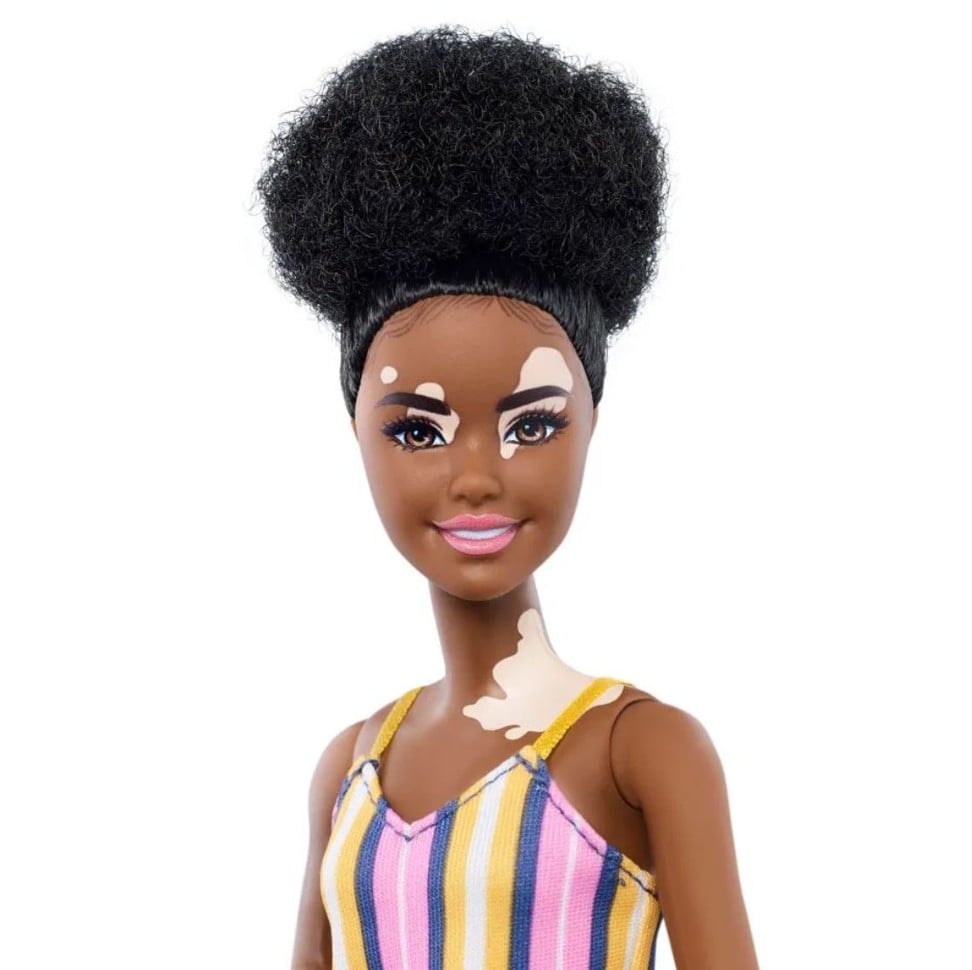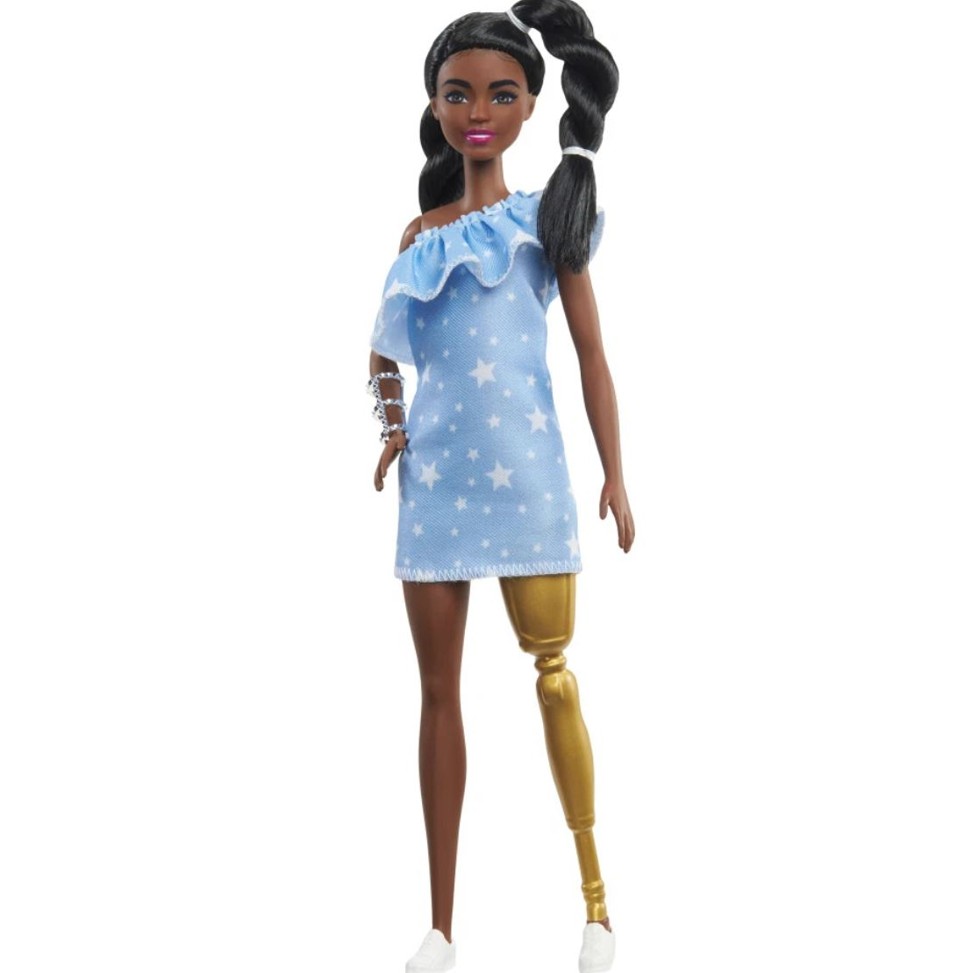
Barbie gets more diverse: Mattel unveils dolls with no hair, vitiligo, a prosthetic limb
- Mattel is continuing its quest for diversity in its Barbie line, introducing new skin tones, faces and body shapes
- Other Barbies include a doll with alopecia, a Barbie in a wheelchair and a Ken with long hair
If you’re a little girl with a prosthetic limb, alopecia or the skin condition vitiligo, there’s now a Barbie doll that looks just like you.
The 2020 additions to Mattel’s Barbie Fashionistas line are the company’s latest nod to making sure its dolls reflect more of society’s diversity. While a doll with a prosthetic limb debuted last year, this year’s version will have a darker complexion. Another new addition has no hair. Even Ken has an updated look, sporting long locks instead of his signature, short, sculpted hairdo.
“We’ve been committed to increasing diversity in our line and showcasing all the different types of beauty that exist … making the line more accessible,” says Lisa McKnight, senior vice-president and global head of Barbie and its dolls portfolio.

There are Barbies with less defined waists, varying bust sizes and sculpted arms. And the doll in a wheelchair even has her own ramp.
Barbie’s focus on a more expansive idea of beauty reflects a broader shift that is affecting not only the toy industry but the worlds of fashion and politics as well.
Model Winnie Harlow, who has vitiligo, has used her celebrity to talk about the autoimmune disorder that leads to a loss of skin colour. Massachusetts Congresswoman Ayanna Pressley revealed recently that she lost her hair due to the skin condition alopecia.

A slew of brands have featured people not typically seen in advertising, from Lucas Warren, who in 2018 became the first Gerber baby with Down syndrome, to Diandra Forrest, who has albinism and modelled for cosmetics company Wet’n’Wild.
“Consumers are asking for this,” says Adrienne Appell, trend specialist and spokeswoman for The Toy Association, an industry trade group, who noted that the doll category had not been as inclusive in years past. Now “toymakers are embracing this … showing what kids are seeing in the real world and representing that in the doll aisle”.
American Girl’s 2020 “Girl of the Year,” Joss, is hearing-impaired. The line’s broader array of doll accessories include a wheelchair and diabetes care kit. And Cre8tive Minds, a New York City-based toy company, has a collection called “Friends with Diverse Abilities” that includes dolls who are visually impaired, and who use a walking frame or arm braces.

Some of the newer Fashionistas have been inspired by customers. “Our wheelchair Barbie and our doll with vitiligo were literally fan requests,” says McKnight.
Shoppers have welcomed the inclusiveness. Barbie’s top seller throughout 2019 was a curvy black doll with an afro. And among the 10 top-selling Fashionistas last year, seven were diverse, including the doll that uses a wheelchair.
This year’s Fashionistas line will roll out in two phases. The new Ken doll and Barbie with vitiligo are on sale now, while the new doll with a prosthetic leg and the Barbie with no hair will become available starting in June.

Steadily increasing purchases of diverse dolls have given a boost to Barbie’s bottom line. The brand reported eight consecutive quarters of growth as of the third quarter of 2019.
“What we’re excited about and proud of is not only is this the right message to send to children,” McKnight says, “but our efforts focusing on diversity are resonating … from a business standpoint. The brand is thriving.”

